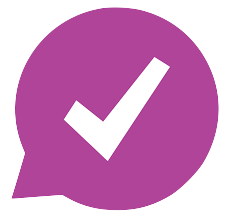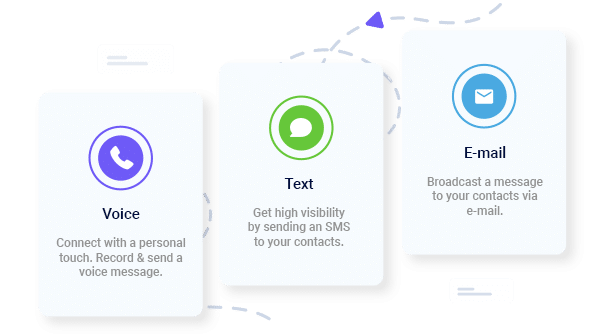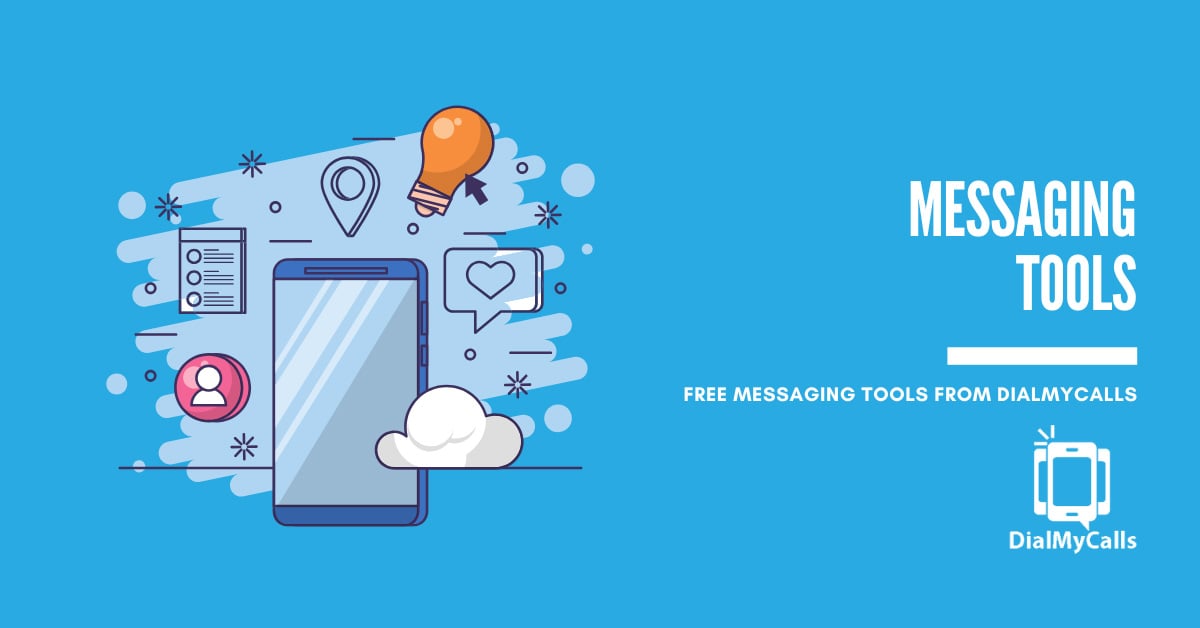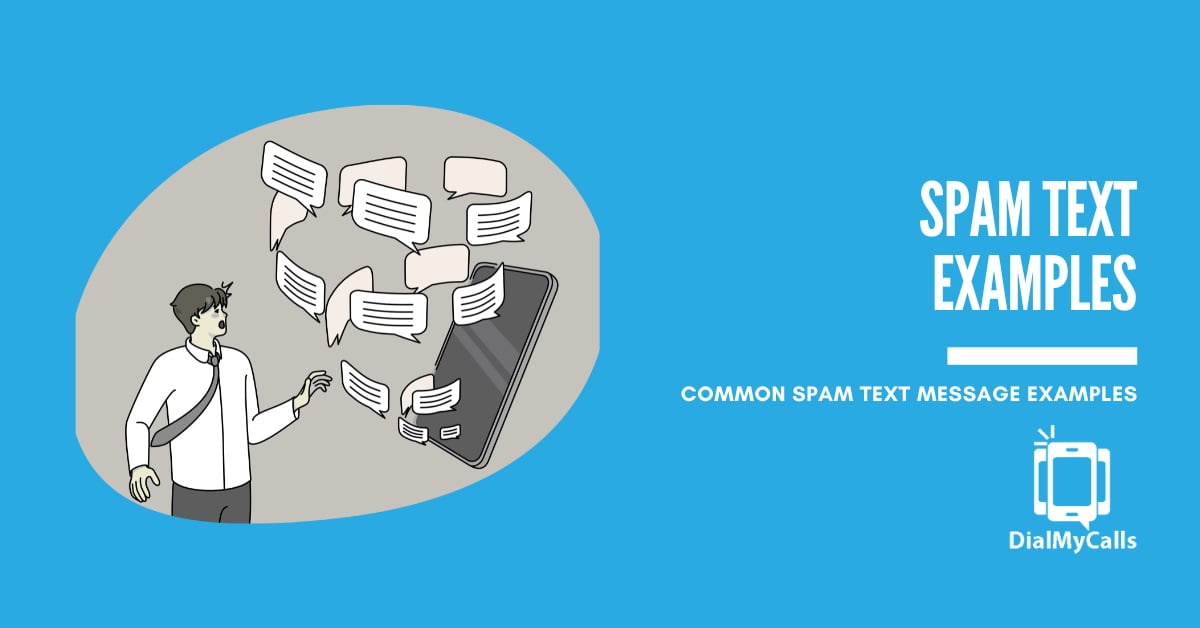What is Call Tracking? What You Need to Know [2025]
Posted by Tim Smith in General Post on May 2, 2024
Updated on January 6, 2025
![What is Call Tracking? What You Need to Know [2024]](https://www.dialmycalls.com/wp-content/uploads/2024/05/call-tracking.jpg)
Lead generation for businesses in 2025 can be hectic, especially when you’re not current with new techniques. While many organizations find surveys, emails, and online polls efficient for lead generation, call tracking brings way more to the table.
Call tracking opens the door to getting valuable insights from customers for your business. Not to mention, it is cost-effective, safe, and reliable. After all, the information comes straight from the incoming calls without violating the customer’s privacy.
But what is call tracking exactly? And why is it so effective for lead generation and marketing? We have all the answers you’re looking for in this comprehensive guide, so keep reading to find out.
What is Call Tracking?
Call tracking is a practice where businesses use unique phone numbers to track their calls. It involves using call tracking software to monitor incoming calls and gain insights, which can be useful for lead generation. With call tracking, you can discover sources, keywords, and even campaigns that draw clients to your business.
Call tracking provides information including:
- The client’s phone number
- The call duration
- Date and time of the call
- The wait time
- New or repeat caller
This information directs marketers when drafting campaigns that could be in the form of voice broadcasts or mass texting campaigns. By accessing this information, businesses know which marketing strategies, campaigns, or practices work best. Safe to say, call tracking serves as the bridge between marketing and customer communication.
Examples of Call Tracking
Many companies today have tapped into the benefits of cell phone call tracking. As time goes by, even more are applying the practice to their marketing strategies, opting out of older methods like polls and surveys. Let’s discuss some ways companies use call tracking techniques in their marketing:
- Billboards: Billboard advertising goes beyond just being an eye-catching marketing technique. In fact, it is one of the most common ways companies implement call tracking.
Here, the company attaches a specific phone number to each billboard advert. When potential customers see the advert and call the number, the business can track these incoming calls to the specific billboard advert.
- Online advertisement: With online ads, the company sends out digital campaigns via various online platforms. Call tracking using this strategy is possible with a Dynamic Insertion Number (DNI).
This setup enables businesses to track incoming calls from their online adverts either on social media or websites. By analyzing the data from these calls, the business can tailor their digital advertising strategies to optimize its ROI.
- Television and radio ads: Similar to billboard ads, companies attach a unique phone number to their TV and radio advertisements. So, when customers call those lines, the company can track them and find out which marketing medium converted the client.
Types of Call Tracking
Various types of call tracking cater to varying business marketing. Each of these types of call tracking has its pros and cons, so when choosing the one you want to implement, you should consider them. With that said, here are the three types of call tracking:
Campaign-Level Call Tracking
Campaign-level call tracking uses a static number to track specific campaigns. In this type of call tracking, companies create a pool of phone numbers first before assigning each campaign its tracking phone number.
Keep Everyone Connected & Informed
Get the Word Out Quickly with Bulk Texting and Voice Calls
For example, a business running adverts on various platforms can use a dedicated static number for each medium. Essentially, one phone number is for billboards and another for television campaigns or emails.
The pros of campaign-level cell phone call tracking include:
- You can use it for offline and online call tracking.
- It tells you which medium works best for campaigns.
- It is perfect for companies that want to study each advertisement medium individually.
Some cons of campaign-level call tracking are:
- It has a limited cookie window. As such, once this window expires, you cannot track calls or access insights from those calls.
- You only have access to the customer’s last click. So you can’t access their prior journey to know what exactly converted them.
Session-Level Call Tracking
With session-level call tracking, businesses can monitor customer call sessions. They can also track the client’s activity with your marketing content. For this to happen, the business assigns each visitor on your website their dynamic phone number.
Typically, this type of call tracking is suited for short sale cycles. For instance, when the customer has already decided to buy and just needs a little more information. Let’s go over the pros and cons of session-level tracking.
Some pros of session-level call tracking are:
- It is a more powerful method of tracking phone calls than campaign-level call tracking.
- It lets the business see which marketing strategies work at an individualized level.
- You can use it to glean data about your customer’s experience with your company.
The cons of session-level cell phone call tracking are:
- If the customer leaves your website, you will lose the tracking information from their journey
- You can’t track the customer’s journey to your website
Visitor-Level Call Tracking
Visitor-level call tracking lets you track your customers’ journey on your website from the phone call to the ad. This lets you spot the exact medium that converted the customer. As such, it shows you which marketing channel or practice works best for attracting clients.
The pros of visitor-level call tracking:
- You don’t lose tracking information when the client leaves your website
- It allows you to track the customer’s journey from the ad to your website
- You get insights about customer engagement on an individualized level
The cons of visitor-level call tracking:
- It can be expensive to implement
Benefits of Call Tracking (Why You Need It)
- Direct Customer Insights
- Improved Customer Experience
- Optimized Lead Generation
- Effective ROI Tracking
Phone calls as a marketing practice have become quite popular among businesses. Plus, with people making about 13.5 million daily calls worldwide, phone calls have immense potential for businesses’ success. With that in mind, pairing these phone calls with tracking technology can leave a good mark on your marketing success. Thus, let’s look at five benefits of call tracking:
1. Direct Customer Insights
By tracking calls to your business, you can gain insights about the quality of your service. This means you can tell how quickly and efficiently your business handles customer issues by monitoring their calls to your company. Call tracking software offers you a platform to find out how well you interact with customers and leave them satisfied with your services.
By tracking calls, you can also see what marketing channels, strategies, or practices generate the most leads.
2. Improved Customer Experience
As you track incoming calls, you can identify loopholes in your services and attend to them immediately. Not to mention, the information you get by tracking these calls can tell you how clients see your services. From these insights, you can make any necessary changes.
3. Optimized Lead Generation
One of the primary goals of company marketing strategies is to generate leads. And with efficient cell phone call tracking, you can achieve this goal. With this system, you can identify the medium that converted the client. In turn, this information lets you focus on the lead-generating media more to attract more clients in the future.
4. Effective ROI Tracking
Since call tracking lets you know which platform or marketing practice converts customers, it also lets you monitor your Return on Investment. For example, if you observe that you attract most clients from email broadcasting, you can invest more in that channel. And with more investment, you can expect a greater ROI.
Ultimately, call tracking lets you make better marketing decisions based on your ROI from previous marketing strategies.
How Does Call Tracking Work?
A call tracking software like CallTrackingMetrics uses special phone numbers to track the client’s digital journeys and phone calls to the business. Think of it as linking a phone number to each marketing campaign you put out. So, whenever a client calls that number, it comes directly to you.
For this to work, the business gets a pool of different phone numbers. Marketers can then attach unique numbers to specific marketing campaigns or media from this pool.
Now, there are various call tracking media, including online and offline call tracking. However, they all work with the same fundamental principles.
Offline call tracking adds a special tracking number to an offline marketing campaign like a billboard. In so doing, the business can track incoming calls from clients to that number to gain the insight it needs.
On the other hand, online tracking uses dedicated phone lines linked to a website or online campaign. This call tracking medium tells the business about the customer’s journey up until the call. For example, if the customer clicks your website link from an email campaign, it shows the process to the marketer.
By tracking these numbers, businesses can tell which online marketing technique or channel works best and leverage it.
How Can Marketers Use Call Tracking?
One of the most vital things marketers must do in call tracking is to determine what type of call tracking would suit their needs. But first, they need to determine what their needs are and lay down a path to their marketing goals.
After identifying their needs and standards, marketers can create a pool of phone numbers for their campaigns. Following this, they can use Dynamic Number Insertion (DNI), which assigns dedicated numbers to specific advertisement media from this pool.
So, when customers call these numbers from their various advert sources, the company can track their incoming calls. By employing this tracking technique, marketers can monitor incoming call duration, wait time, and other factors that could shape future marketing practices.
How to Setup Call Tracking
- Define Your Marketing Goals
- Draft Your Marketing Campaign
- Select Your Call Tracking Software
- Get Your Tracking Numbers
- Implement Dynamic Number Insertion (DNI)
- Integrate it With Your Customer Relationship Management (CRM)
Setting up call tracking for your business seems challenging initially, but that’s not the case. In fact, as long as you know what channels you want to use and what your goals are, you’re good to go. So, without further ado, here’s how to setup call tracking for your business:
Step 1. Define Your Marketing Goals
Before applying cell tracking to your marketing strategy, you should define what you plan to achieve at the end of the process. For instance, your goals could be to improve customer experience, optimize customer support, or boost sales. Whatever the case, defining your marketing goals directs you on how to apply call tracking to achieve them.
Step 2. Draft Your Marketing Campaign
Whether it’s an online or offline campaign, once you have the blueprint and your goals, you should draft a campaign accordingly. Always ensure that your campaigns are engaging and concise so the potential client gets the message almost immediately after viewing it.
You should also draft your campaigns to be personalized if you upload them into online marketing software.
Step 3. Select Your Call Tracking Software
Once you have your goals and marketing campaigns ready, you should choose a call tracking software that meets your requirements. While selecting this platform, ensure to choose one that offers a free trial. This enables you to use the platform and its features to ascertain that it’s the right fit before you make payments.
Furthermore, you should select a platform with added features like mass notification to ensure you get the most out of it.
Step 4. Get Your Tracking Numbers
Depending on the type of call tracking you want to implement, you might use more or less tracking numbers. However, getting a pool of tracking numbers and applying visitor-level call tracking is always best. This ensures your call tracking practice is seamless and has barely any limitations.
Step 5. Implement Dynamic Number Insertion (DNI)
Dynamic Number Insertion (DNI) is a system that swaps out the number on your online campaign for another number unique to each client. This ensures that you can track your business calls adequately and track each call to a specific source.
Step 6. Integrate it With Your Customer Relationship Management (CRM)
After setting up your call tracking system, you should integrate it with your CRM to access customer data from one point. This accessibility makes it easier to view and analyze customer information to make more informed decisions about your marketing.
3 Tips & Strategies For Call Tracking
Now that you know how to set up your call tracking system, you should know a few things before you try to implement it. Let’s go over some tips and strategies for tracking incoming calls below:
1. Track and Analyze Calls Regularly
Cell phone call tracking is most effective when you regularly analyze incoming calls. Regular call analysis ensures you’re in the loop and updated about the working marketing practices for your business. This way, you can make adjustments to your strategies whenever it’s necessary.
2. Leverage Call Recordings
You should record incoming client phone calls to your business as often as possible. Recording these calls enables you to analyze the recordings after the call ends. This way, you can pay attention to the details of the call and gain deeper insights about the customer’s needs.
3. Encourage Collaboration
Creating a team solely for call tracking and analysis ensures you don’t leave any stone unturned with your marketing strategies. This collaboration lets you analyze multiple calls simultaneously, thus saving time and bolstering effectiveness. This ultimately speeds up the process of gaining insight from customer data, which you can use to make decisions.
What to Look For in a Call Tracking Tool
Cell phone call tracking tools can only become better from here. As such, it’s best to hop on the train as soon as possible. But of course, before indulging in call tracking as a marketing practice, you should select the best tool for you. Here are a few criteria to consider when making this choice:
Ease of Use
For a call tracking platform to be effective, it must first be easy to use. This ensures that you can apply the platform’s features without much of a hassle, and in the end, you can get the best out of it. To this effect, before selecting the best platform for your business, check its ease-of-use ratings and analyze the platform properly.
Customer Support
Customer-related issues are highly sensitive, especially since customers determine the success of a business. As such, when handling customer-related issues like call tracking, always ensure your call tracking platform has a working customer support system. This ensures that you can reach out to them in a time-sensitive scenario to fix the issue as soon as possible.
Cost-Effectiveness
A cost-effective cell phone call tracking platform offers core features for a fair price. However, before determining whether a price is fair, you should have a budget. Your budget serves as a yardstick to compare the costs of various platforms to find the perfect one for your business.
Start Using Call Tracking and DialMyCalls Today
If you’re in the market for an effective yet cost-efficient call tracking software then something like CallTrackingMetrics is the right choice for you. This platform ticks all the boxes for call tracking and can suit a variety of organizations. In addition to your call tracking software, utilize DialMyCalls to send those leads mass notifications via phone call, text message and/or email. Create a free DialMyCalls account and tap into effective call tracking today!
Stay Connected with Mass Notifications
Create & Send a Broadcast to Thousands in Seconds
Author
Tim Smith is the Media Manager at DialMyCalls, where he has leveraged his expertise in telecommunications, SaaS, SEO optimization, technical writing, and mass communication systems since 2011. Tim is a seasoned professional with over 12 years at DialMyCalls and 15+ years of online writing experience.
Try Using DialMyCalls Right Now
Start For Free
Recent Posts
- Essential SMS Alert Checklist for Parades, Rallies & Local Events
- How to Send Effective Shelter & Evacuation Text Alerts During Emergencies
- A Step-by-Step Guide to Building a Crisis Communication Playbook
- 6 Top Emergency Notification Challenges Schools Face and How to Solve Them
- 7 Best Practices for Tornado and Severe Storm Emergency Notifications
Categories
“I am a youth minister and have spent hours in the past calling students individually to remind them of an upcoming event or to get out an urgent announcement. With DialMyCalls.com, I cut that time down to about 1 minute. I also love how I can see exactly who answered live and how long they listened so I know if they heard the whole message. DialMyCalls.com is the best website I have stumbled upon all year! Thanks!”
Central Baptist Church
Try Using DialMyCalls Right Now
Start For Free
Author
Tim Smith is the Media Manager at DialMyCalls, where he has leveraged his expertise in telecommunications, SaaS, SEO optimization, technical writing, and mass communication systems since 2011. Tim is a seasoned professional with over 12 years at DialMyCalls and 15+ years of online writing experience.
Try Using DialMyCalls Right Now
Start For Free
Recent Posts
- Essential SMS Alert Checklist for Parades, Rallies & Local Events
- How to Send Effective Shelter & Evacuation Text Alerts During Emergencies
- A Step-by-Step Guide to Building a Crisis Communication Playbook
- 6 Top Emergency Notification Challenges Schools Face and How to Solve Them
- 7 Best Practices for Tornado and Severe Storm Emergency Notifications
Categories
“I am a youth minister and have spent hours in the past calling students individually to remind them of an upcoming event or to get out an urgent announcement. With DialMyCalls.com, I cut that time down to about 1 minute. I also love how I can see exactly who answered live and how long they listened so I know if they heard the whole message. DialMyCalls.com is the best website I have stumbled upon all year! Thanks!”
Central Baptist Church
Try Using DialMyCalls Right Now
Start For Free






